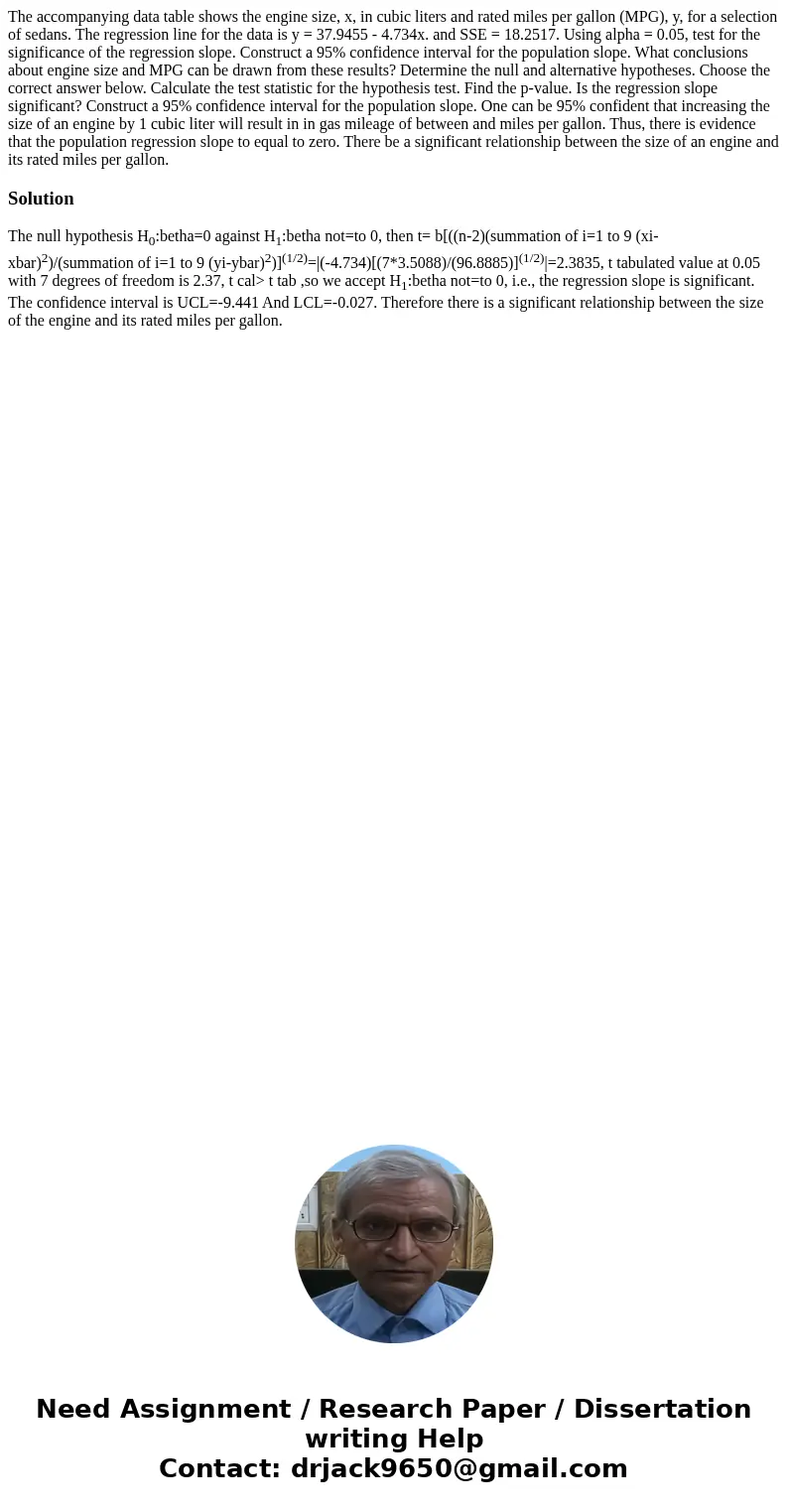The accompanying data table shows the engine size x in cubic
The accompanying data table shows the engine size, x, in cubic liters and rated miles per gallon (MPG), y, for a selection of sedans. The regression line for the data is y = 37.9455 - 4.734x. and SSE = 18.2517. Using alpha = 0.05, test for the significance of the regression slope. Construct a 95% confidence interval for the population slope. What conclusions about engine size and MPG can be drawn from these results? Determine the null and alternative hypotheses. Choose the correct answer below. Calculate the test statistic for the hypothesis test. Find the p-value. Is the regression slope significant? Construct a 95% confidence interval for the population slope. One can be 95% confident that increasing the size of an engine by 1 cubic liter will result in in gas mileage of between and miles per gallon. Thus, there is evidence that the population regression slope to equal to zero. There be a significant relationship between the size of an engine and its rated miles per gallon.
Solution
The null hypothesis H0:betha=0 against H1:betha not=to 0, then t= b[((n-2)(summation of i=1 to 9 (xi-xbar)2)/(summation of i=1 to 9 (yi-ybar)2)](1/2)=|(-4.734)[(7*3.5088)/(96.8885)](1/2)|=2.3835, t tabulated value at 0.05 with 7 degrees of freedom is 2.37, t cal> t tab ,so we accept H1:betha not=to 0, i.e., the regression slope is significant. The confidence interval is UCL=-9.441 And LCL=-0.027. Therefore there is a significant relationship between the size of the engine and its rated miles per gallon.

 Homework Sourse
Homework Sourse